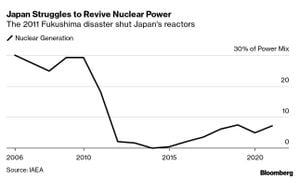On February 25, 2025, the cryptocurrency markets took a notable hit, declining by 7% as cascading liquidations totaled $208 billion, shaving off $80 billion from the sector's overall valuation. The drop was punctuated by Bitcoin (BTC) hitting 40-day lows, plunging 4.7% to trade around $91,000. Meanwhile, other cryptocurrencies like Ethereum (ETH) and Solana (SOL) also faced significant downward trends, compounding investor anxieties.
The decline followed US President Donald Trump’s announcement on tariffs set to take effect on March 4, targeting both Canada and Mexico. The announcement created bearish sentiment across global financial markets, including Bitcoin, which has shown heightened sensitivity to economic policies and broader market sentiment. Following this news, Bitcoin’s price fell as low as $93,000 during the intra-day session, marking losses of over 7% since the Bybit hack's ramifications began to be felt.
Market analysts noted how Trump's tariff declaration sparked fears of inflationary pressures, which could force the Federal Reserve to adhere to a stringent rate path, adversely impacting risk assets such as cryptocurrencies. Trading volumes surged, with Bitcoin ETFs witnessing another $76 million outflow, bringing the total outflow over five consecutive days to $700 million.
Despite this overall trend, some assets bucked the market’s negative spiral. Hedera (HBAR) and Bittensor (TAO) emerged as the only two cryptocurrencies within the top 50 to record gains during this turbulent period, highlighting the fragmented nature of investor strategies and sentiments.
Bitcoin’s troubles were compounded by issues surrounding its technical indicators, which suggested continued downside risk. BTC’s price action fell starkly against the backdrop of utter chaos, as it registered 17 consecutive sessions below the psychologically important $100,000 threshold. Speculation ran high about potential policy changes by the SEC, especially following the agency’s recent decision to drop its investigation against Robinhood Crypto without any enforcement action. Robinhood’s Chief Legal Officer, Dan Gallagher, welcomed the development, asserting, “We applaud the staff’s decision to close this investigation with no action. Let me be crystal clear—this investigation never should have been opened.”
This closure of the SEC inquiry not only boosted Robinhood’s standing among investors but also suggested a broader regulatory shift, with Gallagher critiquing the past approach. “Instead of regulation by enforcement, it’s time for the SEC to turn to regulation by regulation,” he stated, emphasizing the need for clearer guidelines within the industry.
The shift at the SEC marks what some hope is the beginning of regulation fostering innovation rather than stifling it. Mark Uyeda, Acting SEC Chair, remarked, “Over the past five weeks, the Commission has begun the process of returning its narrow mission to facilitate capital formation.” This shift could potentially alter market expectations moving forward and restore some fairness to crypto trading environments.
Turning to altcoins, Solana encountered even more turbulence. It traded at lows not seen since October 2024, dropping approximately 51% from its year-to-date peak of $295. The situation was aggravated by rumors surrounding the impending unlocking of 11.2 million SOL, anticipated to take place shortly, as the defunct FTX exchange estate aims to refund creditors. Investors reacted quickly, selling off holdings to mitigate exposure to the market supply increase.
Among Ethereum, the day was marked by losses of around 6%, largely incited by the Bybit hack, where over 400,000 ETH was stolen. While Bybit has promised to fully remediate the customer funds, the event sparked fears of potential sell-offs, leading many traders to minimize their ETH positions.
On the ground level, the market faced considerable pressure; Solana’s price fell to as low as $142, directly tied to the turmoil within its ecosystem and investor anticipation about the FTX proceedings. Ethereum and Bitcoin both languished with losses during this significant downturn, leading to concern about long-term viability if foundational stability cannot be found.
Despite these declines, there were indicators of strength, particularly among certain crypto-centric companies and offerings. The Bitcoin market has shown incredible resilience, reflecting both the optimism and inherent volatility of such investments. Analysts remain watchful, especially with the SEC's anticipated decisions surrounding cryptocurrencies likely to continue influencing sentiment.
Overall, current investor sentiment appears tepid, caught between regulatory realities and general market dynamics. All eyes are on how the SEC’s regulatory stance develops and whether strategic movements from industry leaders can stabilize or potentially reboot interest within the broader crypto markets.



